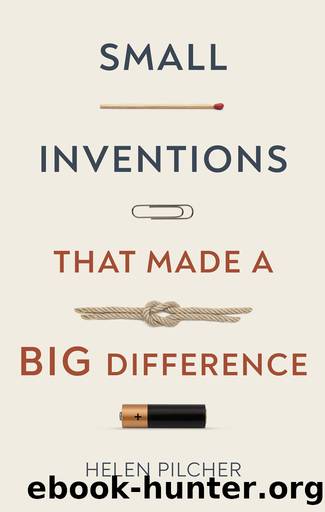Small Inventions That Made a Big Difference by Helen Pilcher

Author:Helen Pilcher
Language: eng
Format: epub
Publisher: Welbeck Publishing Group Limited
Face mask
In 1958, a woman called Sara Little Turnbull stood in the directorâs room of the technology company 3M. Surrounded by men, she proceeded to deliver a pitch with a pithy one-word title: âWhy?â
With the war long over, companies found themselves searching for alternate uses for some of the technology they had developed. For example, what to do with a ceramic material that had been used in the nose cones of guided missiles, or a non-woven polymer called âShapeenâ that had been used for making ribbons.
Little Turnbull, who was a successful designer, was working for 3M as a consultant. She realized that Shapeenâs potential lay far beyond the realm of gift wrap. Why should 3M invest in Shapeen? She went on to list more than a hundred reasons, in the form of potential products and applications.
The company promptly enlisted her help to develop one of these ideas, the moulded bra cup, but Little Turnbull had another, more important, application in mind. She had recently spent a lot of time visiting sick relatives in hospital, where she became acutely aware of the flimsy, poorly fitting face masks worn by medical professionals.
The masks were made from a single layer of cotton, a woven material that is produced by weaving thin fibres together, one over the other. Tiny gaps between the threads gave the fabric breathability but offered little protection against infectious airborne particles. Shapeen, on the other hand, is a non-woven material. Itâs made from fibres that are bonded together with heat, so although the material still contains pores, they are much smaller. Little Turnbull realized that a closely fitting, mouldable mask made from Shapeen would offer the medics more protection. The same technology that had inspired the development of the moulded bra compelled her to develop what would go on to become one of our most important defences in the modern-day fight against COVID-19 â the N95 face mask.
Face masks have come a long way since they were first invented thousands of years ago. When he was preparing scarlet vermilion pigment from the toxic mineral cinnabar, Roman philosopher Pliny the Elder protected himself using face coverings made from animal bladders. In the thirteenth century, Italian explorer Marco Polo described the servants attending the Chinese emperor, who covered their faces with silk scarves to avoid contaminating the meals that they prepared.
The first known medical use of masks occurred in the seventeenth century during an outbreak of the bubonic plague or âBlack Deathâ. French doctor Charles de Lorme invented what has to be the most sinister piece of medical kit ever, save for the anal endoscope. The beak mask had two circular eye holes made from glass, and an enormous curved beak that was stuffed full of herbs, straw and spices. It was worn with a flat-brimmed black hat and an equally dark floor-length overcoat.
Looking like a cross between Big Bird from Sesame Street and the Grim Reaper, the plague doctors who wore them were a terrifying sight. Instead of scythes, they carried long sticks, which they used to prod their patients from a distance.
Download
This site does not store any files on its server. We only index and link to content provided by other sites. Please contact the content providers to delete copyright contents if any and email us, we'll remove relevant links or contents immediately.
| Automotive | Engineering |
| Transportation |
Machine Learning at Scale with H2O by Gregory Keys | David Whiting(4179)
Never by Ken Follett(3790)
Urban Outlaw by Magnus Walker(3340)
OPNsense Beginner to Professional by Julio Cesar Bueno de Camargo(3251)
Sapiens and Homo Deus by Yuval Noah Harari(2987)
Will by Will Smith(2792)
A Short History of Nearly Everything by Bryson Bill(2629)
Hooked: A Dark, Contemporary Romance (Never After Series) by Emily McIntire(2500)
Rationality by Steven Pinker(2291)
Borders by unknow(2229)
The Becoming by Nora Roberts(2087)
Holy Bible (NIV) by Zondervan(2086)
The One Percenter Encyclopedia by Bill Hayes(1787)
HBR's 10 Must Reads 2022 by Harvard Business Review(1777)
Freedom by Sonny Barger(1771)
A Short History of War by Jeremy Black(1762)
Five Ways to Fall by K.A. Tucker(1700)
Go Tell the Bees That I Am Gone by Diana Gabaldon(1687)
Girls Auto Clinic Glove Box Guide by Patrice Banks(1684)
